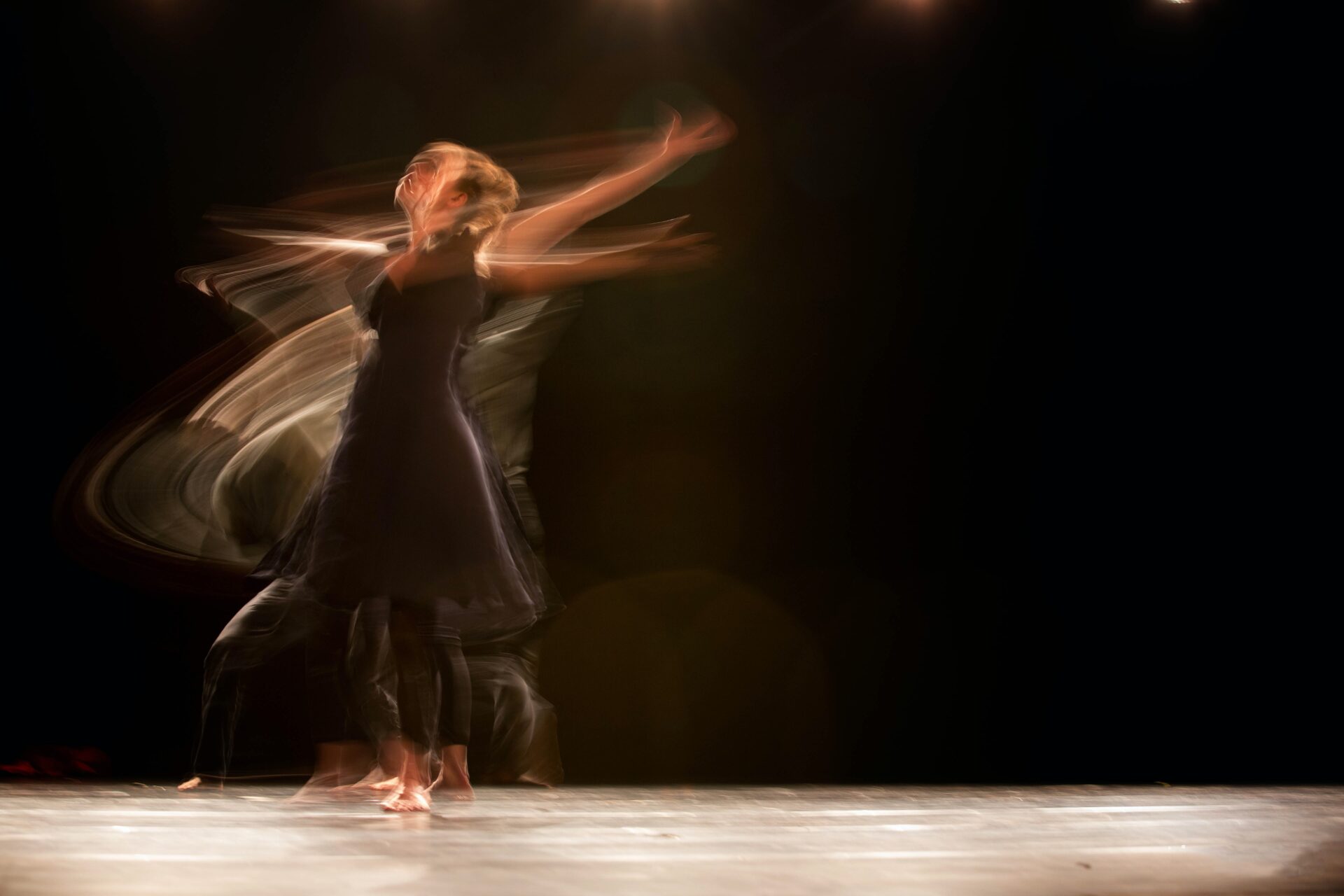
Blurred image of a woman dancing.
Photo by Ahmad Odeh on Unsplash
Mary Price Boday: A life of dance and patient endurance
She represents great women of the past, present, and those yet to come. During a recent interview, she was quick to say that she is a fighter, tenacious in all she does, which she admits has permitted her to achieve her many goals. Among other things, Boday is a citizen of the Cherokee Nation, author, educator, dancer, and survivor. Originally from Norman, OK, Mary will tell you that she was inspired by the Original Mickey Mouse Club Show in 1955; it was at that time she was sure she wanted to become a dancer. When she was 13, Mary developed rheumatic fever and was sick for seven months. Later, when well enough, she underwent a tonsillectomy. She basically bled to death, was revived, and received numerous blood transfusions. She endured this during an already difficult and stressful childhood. Yet none of this adversity kept her from being who she wanted to be.
Her childhood is a part of her life that Boday says she has never fully reconciled. She and her mother were physically abused, and Mary would escape to her Episcopal priest’s house where she sometimes stayed for days or weeks at a time. She entered the University of Oklahoma in 1963 as an elementary education major, but was accepted into the university’s intermediate ballet program under the tutelage of Miguel Terekhov and Yvonne Chouteau. Raised in Vinita, OK, and one of five internationally recognized Native American ballerinas at that time, Chouteau had a profound influence on Boday. While Boday was in the ballet program at the University of Oklahoma, Terekhov suggested that she would never be good enough to dance professionally. Much later, after seeing her dance, he apologized. Since those days, she has proven that “never taking no for an answer” has moved her along her path with great success.
In 1968, Boday went to New York City on a dance scholarship to the Juilliard School. In New York City, she studied under one of her most influential teachers, Mary Anthony, at the Mary Anthony Dance Theatre. Boday even published a biography of Anthony titled “A Dancer’s Journey: It All Began With A Lie,” where she covers Anthony’s intriguing personal and professional life. Mary later taught different styles in varying venues, one of them being at the University of Illinois in 1976 and the National Academy of the Arts, where she taught Constance Lee Scheurer. She has studied and taught in NYC, Seattle, Pennsylvania, Oklahoma, and elsewhere. She has been listed in Who’s Who in Finance and Business, Who’s Who in the West, Who’s Who in the East, and Who’s Who in Entertainment.
When asked how she thinks women have fared through the years, she acknowledges that women have come a long way. But, she adds, she still sees problems. For example, she is quick to note that when she’s in mixed company—say, at a social event—many men will still address her husband or other males first or ignore her altogether. Given that, historically, Cherokee society used to be more female-oriented, her observation is that is has become more male-orientated over time due to colonial influences. Significantly, Cherokee society by tradition has been matriarchal; that is, in the earliest times, the clan system dicated that one was only Cherokee if one’s mother was Cherokee. Over time, it became accepted practice that a father’s line to Cherokee women is a valid barometer of what made one Cherokee with respect to birthright, as is true in Boday’s case, just as it is with former Prinipal Chief of the Cherokee Nation Wilma Mankiller.
One of the most important aspects of being Cherokee is respect for, and interest in, the Cherokee language. Boday, a descendant of Cherokee beloved woman Nancy Ward, or “Nanyehi,” is in her third year of studying the language and acknowledges it is one of the most difficult languages to learn. She says the way one thinks the language informs how one speaks it, true of many languages with respect to how the language reflects the culture. Being Cherokee has been paramount to how Boday frames her identity. She participates regularly in tribal activities and responsibilities and is an active member of the Cherokee Community of Puget Sound, an official satelite community of the Cherokee Nation.
When asked about being a woman of God, Boday, having been raised in the Episcopal Church, is reflective and contented. She was active in the church when she was young and at different times throughout her life. Solidified in her faith, she admits the church has its faults, stating “I just don’t like what churches have done” in reference to how the institutional church and her people have behaved at various times. Nevertheless, she stated what is most important: “The church is within me” indicating that she exercises the full essence of her spirituality regardless of church participation.
She summed up the time with a self-deprecating view of her life as a professional dancer by saying,, “Like all professional athletes, your body gives out first. My energy inside is great!” Today, she is spread thin among many projects, her positive and unshakble attitude leading the way.
Mary Price Boday is an excellent example for Women’s History Month. Her own theology of kindness carries over into all that she does.
The views expressed are those of the author and not necessarily those of American Baptist Home Mission Societies.


